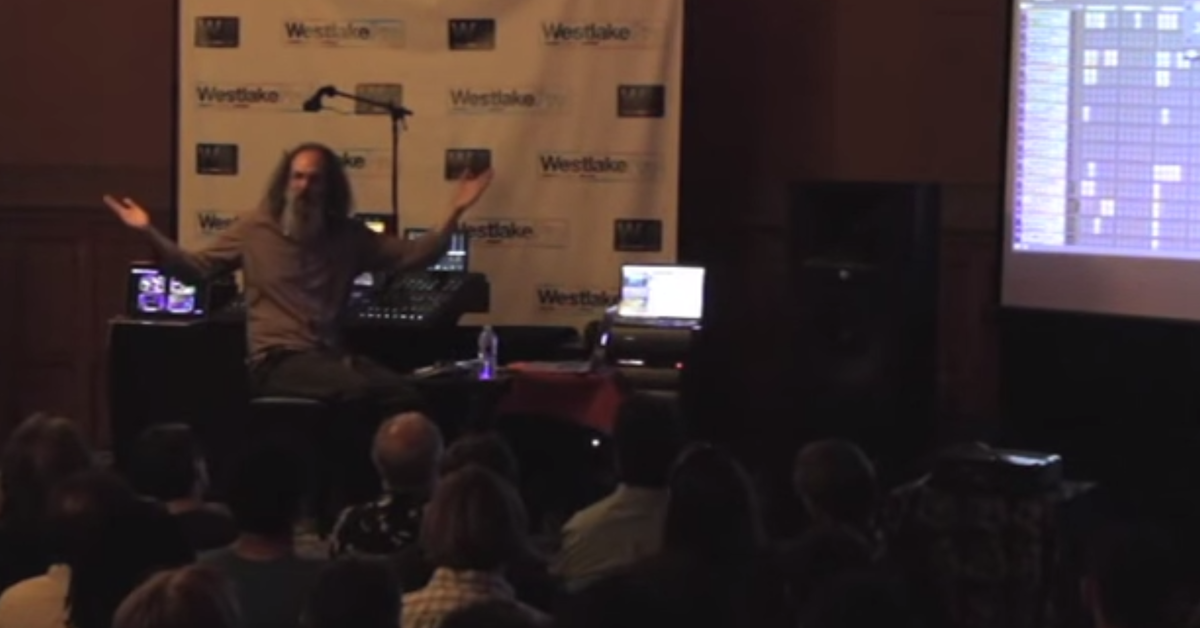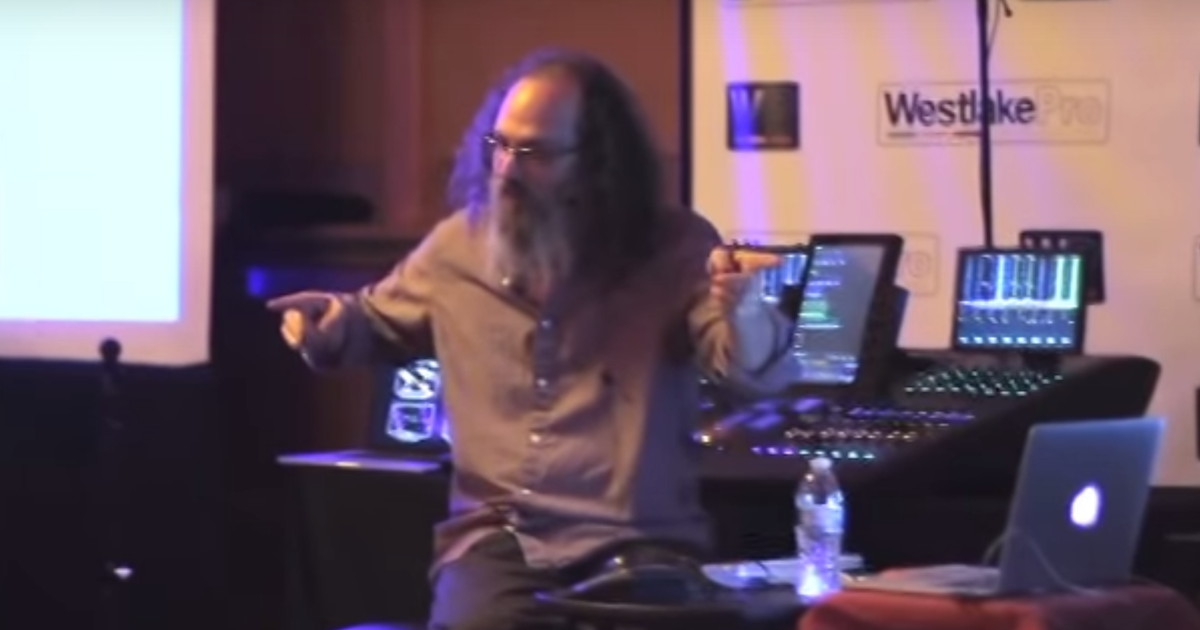Mixing Masterclass with Andrew Scheps — Part 1
This is actually my Pro Tools rig that I mix on. This MacBook Pro with a Thunderbolt chassis. So there are no, “Oh, yeah, I printed some stems, and I’m going to talk about it,” these are the actual mixes as they were printed for the records that they’re on.
So part of what I want to talk about is sort of how I got myself back into the box, because it takes everything I was doing with outboard gear and large format consoles, and I just tried to recreate as much of that as possible, because I didn’t want to relearn yet again how to mix, because I moved from in the box to consoles when I could afford one, and now I moved back, and the last thing in the world I wanted to do was spend a lot of time kind of refiguring out how to do it.
So I really built a template that pretty much replicates what I had going on with outboard gear, and then of course, because it’s a template, then you can really start screwing with it on a per-song basis a lot more than you can if you’re dealing with analog gear that has to stay setup.
So, talking about mixing is like talking about music, is like talking about architecture, it’s all very hard to do.
So what I want to do is play you things, and then I’ll sort of walk through the setup of one of the songs, and then talk about some sort of specific decisions I had to make on those songs, because I think that’s a lot more relevant than saying, “I used this compressor,” because I mean, who cares. It doesn’t matter. If it compresses, if it doesn’t, it’s not a compressor. That’s the way I can tell.
So okay, now I am not incredibly conversant with this control surface, but I know where the volume knob is. There are a couple things actually I do want to talk about, because one of the things — I’ll play music, I promise — one of the things that’s really, really important to me while mixing is to be able to move really fast.
I hate moving slowly, I hate having to figure something out and find things, and stuff like that. So my color coding is the same on every single song. My order of instruments top-to-bottom is the same on every single song. The color of auxes that come from the session I’m given are the same color on every song, and they’re different from the color of auxes that I make. The color of the VCAs is the same on every song, and that’s so that I can glance at a session, I’m seeing the bottom, the percussion, I’m seeing the bass, and I’m seeing the top of the guitars, and I know that. And there’s a VCA for the bass, because it’s yellow.
So that’s something that I do just to be super consistent, and I did it on the console too. I mean, I carry around a bag of Sharpies, and the Sharpies are all different colors, and those colors match the colors in Pro Tools, because that way, I can glance at the console, and the lead vocal, which is always on fader 24 or whatever is right next to the center section, is orange and it’s the same as the session.
So moving very fast is a big thing, and a couple of things that are awesome on the S6 is first of all, this scrolling screen here, because I color code and I order my tracks, I can really quickly see that’s percussion, because percussion is brown, obviously. Drums are blue, get down here and I’ve got all of my auxes and things like that. Then strings and horns, they get colors that — you know, not every session has them.
So basic instrument groups are always the same color. Makes it quick. The other thing is that I use locate points all of the time so that I can really quickly jump between choruses. I always have locate point 1 be the beginning of the song, so I don’t have to think about it, I just go to locate point 1.
There are all of these amazing sort of macro function keys down here, and this screen right here is normally transport functions, and if you hit memory locations, it just populates the screen with the first one, two, three, four, five, it’s the first twelve — or actually, it’s the first ten, and then you’ve got buttons for creating memory locations. It’s the first ten memory locations of the song.
Now, I know no matter what song I open up, I hit the top left button on that screen, and I’m back at the beginning of the song. That’s important, I kind of like that. So anyways, you’ll find out as we go through this, I’m incredibly lazy. Alright?
And that’s the key. The key to good mixing is to be lazy.




